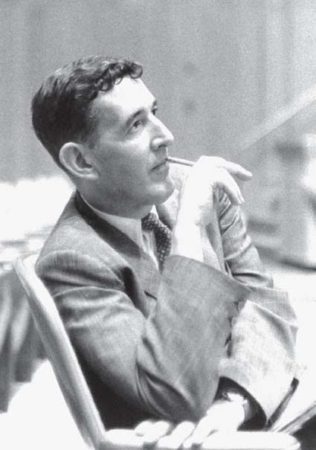City
Rediscovering the Center
By William H. Whyte
One of Newsweek’s “Fifty Books for Our Time”
For sixteen years William Whyte walked the streets of New York and other major cities. With a group of young observers, camera and notebook in hand, he conducted pioneering studies of street life, pedestrian behavior, and city dynamics. City: Rediscovering the Center is the result of that research, a humane, often amusing view of what is staggeringly obvious about the urban environment but seemingly invisible to those responsible for planning it.
Whyte uses time-lapse photography to chart the anatomy of metropolitan congestion. Why is traffic so badly distributed on city streets? Why do New Yorkers walk so fast—and jaywalk so incorrigibly? Why aren’t there more collisions on the busiest walkways? Why do people who stop to talk gravitate to the center of the pedestrian traffic stream? Why do places designed primarily for security actually worsen it? Why are public restrooms disappearing? “The city is full of vexations,” Whyte avers: “Steps too steep; doors too tough to open; ledges you cannot sit on. . . . It is difficult to design an urban space so maladroitly that people will not use it, but there are many such spaces.” Yet Whyte finds encouragement in the widespread rediscovery of the city center. The future is not in the suburbs, he believes, but in that center. Like a Greek agora, the city must reassert its most ancient function as a place where people come together face-to-face.
Reviews
“[Whyte’s] mission has been to examine how people cope with the best-and-worst-laid plans of architects and urban engineers. … City punctures commonplace assumptions about urban life in virtually every chapter. … There is genuine brilliance here.” —The New York Times
“I would place it [the AIA Guide to New York City] on that short shelf of postwar urban classics like Jane Jacobs’s Death and Life of Great American Cities and Robert A. Caro’s Power Broker and William H. Whyte’s City that have profoundly altered the way we looked at cities and taught us to appreciate their messy ad hoc additive nature.” —Phillip Lopate, the New York Sunday Times
“We who hug the city to us by instinct are grateful to Whyte for providing us with a hundred—a thousand—arguments for doing so.” —The New Yorker
“Bravo, Mr. Whyte! Your position is unassailably persuasive, and your book is an urbane humdinger.” —Chicago Tribune
“At once a fine-grained study and a philosophic plea, Whyte’s work argues that the strength of the downtown core is its role as meeting place. … City is a jangled, affectionate study of a place where good and evil create something unique.” —The Boston Globe
“City is written in clear, straightforward, and vivid prose. … Whyte bubbles over with data, most of which is utterly fascinating. … He is an authentic visionary.” —Los Angeles Times
“Whyte’s Street Life Project studied the use of urban spaces for 16 years. This follow-up to The Social Life of Small Urban Spaces is an engaging look at the variety of human interactions which make ‘downtown’ vibrant. Whyte looks at such diverse topics as pedestrian movement, concourses and skyways, sunlight and its effects—all from the perspective of a confirmed city-lover. His observations and recommendations can be read with profit and pleasure by professional planners and readers interested in what makes a city tick.” —Library Journal
“Informal, spontaneous interactions give the modern city its vitality, so Whyte’s enemies are urban planners who evince disregard and even contempt for street life. Part meditation, part design manual, this marvelously observant tour of cities will please anyone who cares about urban livability.” —Publishers Weekly

